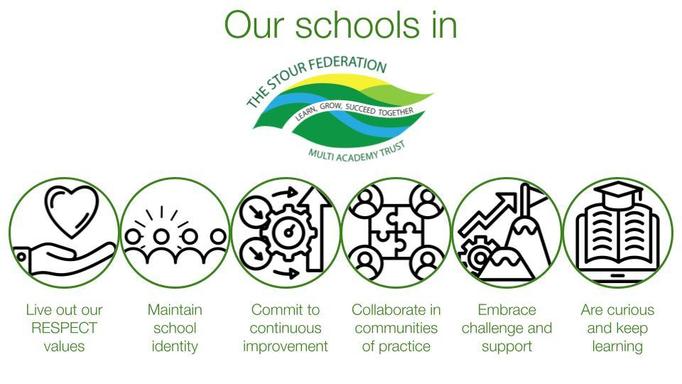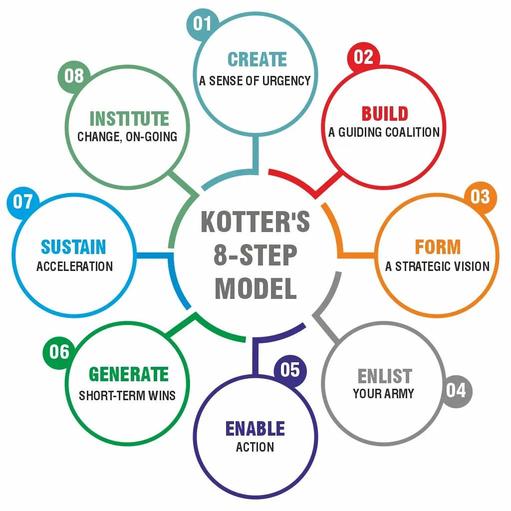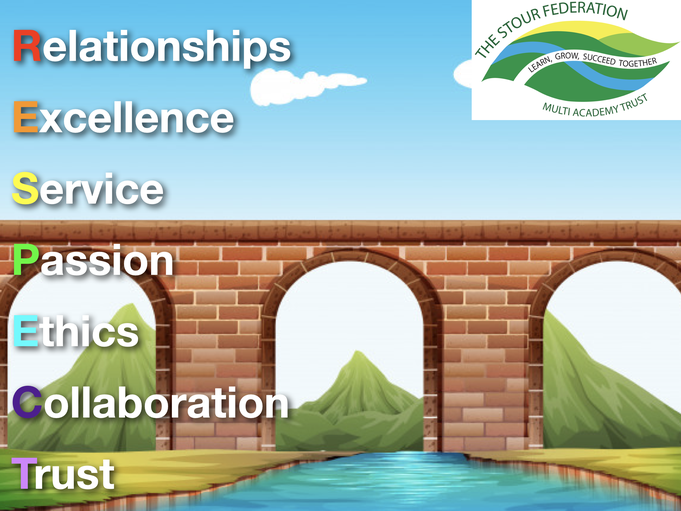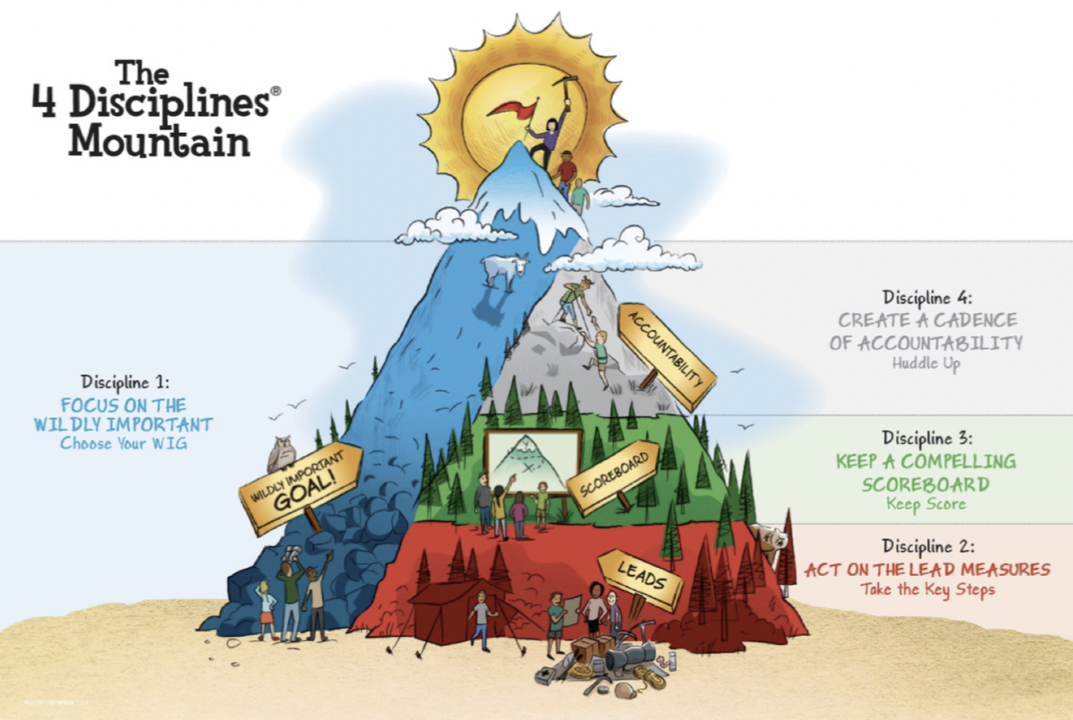
The Stour Federation Multi Academy Trust
Spine

ALIGNED AUTONOMY
The Spine confirms our commitment to organisational clarity, ensuring every staff member, from teachers to teaching assistants, is empowered to lead and innovate while operating within a powerful, supportive collective framework.
Our Trust model is built on the core principle of Aligned Autonomy: the optimal balance between collective consistency and self-determination, integrating freedom and responsibility. This model is designed to empower agility, acknowledging that our ability to adapt quickly and effectively relies on pushing power down and trusting those closest to the work.
This optimal balance is crucial because organisational growth carries the risk of over-standardisation, which can squeeze out the very talent and creativity that made us successful in the first place.
Why Alignment? Alignment ensures we function effectively as a unified system. We share the same Trust mission and values, guaranteeing that all staff and children benefit immediately from our best collective practice, expertise, resources, and reputation. Clarity is paramount, ensuring that rules are focused on clarity rather than control.
Why Autonomy? Autonomy is foundational to professional expertise and personal success. It ensures that micromanagement is avoided, which otherwise breeds indifference. Leadership and personal accountability are founded on ownership and self-direction. If we stifle variation, we eliminate the opportunity for learning from different effective practices and cripple flexibility necessary to respond to changing needs.
The Force of Collective Advantage (The Trust Dividend)
By committing to this framework of aligned autonomy, we actively pursue a collaborative advantage, which results in a valuable Trust Dividend. This dividend represents the accumulated value generated by colleagues across the Trust making better-informed decisions more often, over time.

Through active participation in collaborative networks like our Communities of Practice (CoPs), you contribute directly to this collective strength by enhancing teaching quality, improving pupil outcomes, and developing a supportive professional community. This collaborative advantage strengthens us, making the entire Trust more than the sum of its individual parts, which allows our schools to feel the force of shared success.
Self-Determination and Professional Flourishing
The internal motivation required to achieve collective success is central to Self-Determination Theory. This theory holds that people are intrinsically motivated to grow, develop, and find satisfaction when three innate psychological needs are met:
- Autonomy: Having ownership and exercising self-direction over your work.
- Competence (Mastery): The continuous effort to grow and improve professional skills.
- Relationship (Purpose/Belonging): Working towards a purpose higher than oneself and fostering a sense of connection.
These three needs are central to achieving job satisfaction and happiness. Our strategic aim is to cultivate a supportive and empowering environment where your professional development is prioritised, allowing you to bring your whole selves to do the best work of your lives.
Managing Change: Kotter’s 8-Step Model
Successfully executing our ambitious 2030 Strategy requires structured change management. We use Kotter’s 8-Step Model to ensure our strategic initiatives are targeted, coordinated, and executed effectively. A well-crafted mission and vision guide the day-to-day behaviour and decisions of everyone in the organisation.

Based on our commitment to organisational health and alignment), we regularly revisit Patrick Lencioni's six critical questions. The answers provide a consistent framework for everyone's decision-making.
1. Why do we exist?
Our overall vision is to develop and grow our group of inspirational schools which instill ambition and desire in learners, open their minds, widen their horizons, and equip them to flourish in a diverse, challenging world. Our unwavering North Star is flourishing. We aim to intentionally craft experiences designed to make our children feel safe, valued, and inspired, ensuring everything we do enhances the life it touches. This commitment, often framed as providing ‘unreasonable hospitality’, is grounded in the belief that every individual deserves the opportunity to live life in all its fullness (John 10:10).
We are a member of The Confederation of School Trusts, who make four propositions:
- The goal is for every teacher in every classroom to be as good as they can be in what they teach (the curriculum) and how they teach (pedagogy).
- For this to happen, we need to mobilise for every teacher the best evidence from research.
- There is no improvement for pupils without improvement in teaching, and no improvement in teaching without the best professional development for teachers.
- Strong structures (in groups of schools) can facilitate better professional development and thus better teaching and improvement for pupils.
2. How do we behave?
In The Stour Federation, we learn, grow, and succeed together, governed by our Trust RESPECT values as the minimum behavioural standard. We understand that values inform expectations, expectations influence behaviour, and behaviour creates culture.
Our Trust is ONE organisation. The trust is its schools, and the schools are the reflection of the trust. Our interdependence requires us to commit to collaboration and trust for horizontal improvement across all our schools rather than working in silos.

The Stour Federation Way is the set of principles guiding continuous improvement and mutual respect for all people. This is our philosophy for creating an ethic of excellence where everyone feels valued and supported. We embrace Kaizen, the philosophy of making small, consistent changes for the better, as we strive to improve our learning culture and welcome change. This requires maintaining a stable core to safeguard our values while embracing a disruptive edge to foster innovation.
The Stour Federation Way is rooted in 10 core principles, organised into four key operational parts:
Part i - Philosophy: Thinking Long Term
1. Plan for the future.
Part ii Processes: Delivering Value
2. Connect people and processes.
3. Balance the workload.
4. Standardise our work.
5. Build in quality.
6. Use technology wisely.
Part iii People: Respect, Challenge and Grow
7. Develop strong leaders.
8. Work with our partners.
Part iv Problem Solving: Think and Act Scientifically
9. Observe and learn.
10. Align our goals.
3. What do we do?
We establish high-performing and flourishing church and community schools by intentionally building an ethic of excellence, and cultivating highly effective habits that develop essential global dispositions: character, citizenship, collaboration, communication, creativity, and critical thinking, ensuring a commitment to a well-rounded education that goes unreasonably beyond academic outcomes.

4. How will we succeed?
We achieve success by building a unified ecosystem driven by the principles and strategies outlined in our 2030 Blueprint:
| Component | Focus Area | Outcome (Supporting Framework) |
|---|---|---|
|
Strategic Drivers (Forces that attract power and generate motion) |
Wellbeing and Learning (ensuring happy staff and children learn best) Social Intelligence and Artificial Intelligence (leveraging technology while developing human skills) Equity-Equality Investments (making strategic investments to address individual needs) Systemness (working collaboratively as one powerful system) |
6Cs (Character, Citizenship, Collaboration, Communication, Creativity, Critical Thinking) are the global competencies we equip children with |
| Core Strategies (The blueprints for belonging and learning) |
Inclusion Strategy People Strategy Teaching, Learning and Curriculum Policy Thrive Approach |
Joyful teaching and learning is enabled by designing an exciting curriculum and pedagogical recipes for impact |
| Enablers The architecture for sharing expertise) |
Communities of Practice (CoPs) (sharing expertise and fostering synergy) Coaching (skillful dialogue and ownership) Digital Champions (integrating technology thoughtfully) Culture Champions (providing staff voice on strategy) |
These mechanisms cultivate deep collaboration and continuous professional development |
5. What's the most important now?
Our immediate priority is closing the execution gap using the 4 Disciplines of Execution to accelerate our 2030 Strategy. We must intentionally focus our energies, ensuring our strategic plans are translated into concrete results, especially in championing inclusion.

Central to this focus is achieving equity by relentlessly identifying and removing barriers to participation and learning. We shift our mindset away from a reactive model to one where we proactively anticipate barriers during planning, ensuring inclusive practice is designed by default, and securing empowerment and success for all children.
6. Who must do what?
We operate under the principle of aligned autonomy, recognising that effective leadership can come from anyone, regardless of rank. Authority is distributed to maximise speed and quality of decision- making, while always maintaining system alignment.
Individual Agency: Every professional is responsible for taking ownership and showing self-direction in their work. We use our professional judgement to drive continuous improvement, aligning our actions with the Trust’s mission. This process of growing great people relies on trust in colleagues to make decisions.
School Level: Headteachers and school teams hold primary responsibility for context-specific decisions regarding local pedagogy and resource deployment. Teachers must develop pupils’ agency by enabling children, especially those with SEND, to voice their opinions and ask for the support they need.
Trust Level: Trust Improvement Leaders (TILs) reinforce the sense that we are one organisation and provide evidence-informed guidance, expertise, and support to ensure system-wide consistency. The Trust SENDCO ensures system alignment for provision for pupils with Special Educational Needs and works to develop staff expertise.
